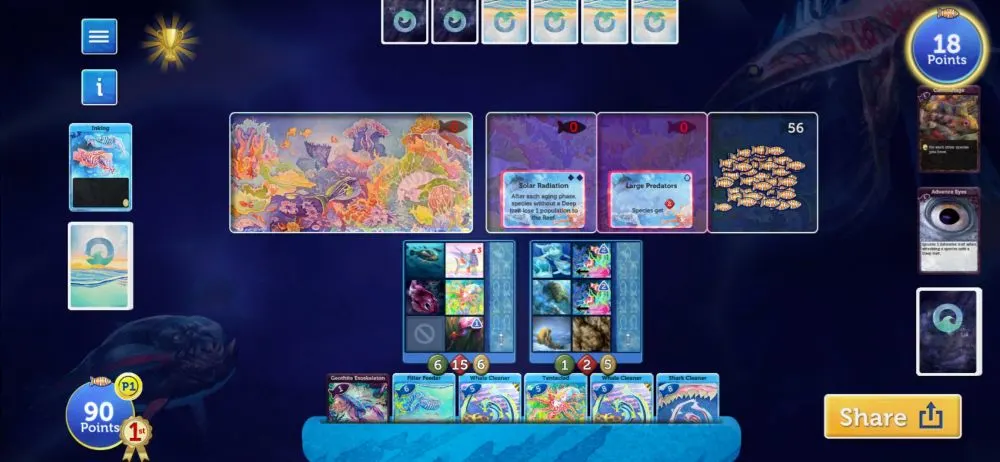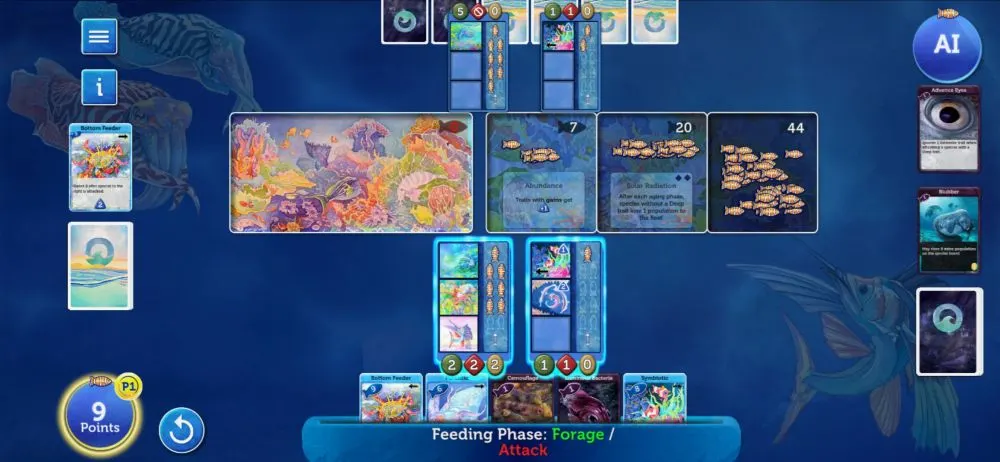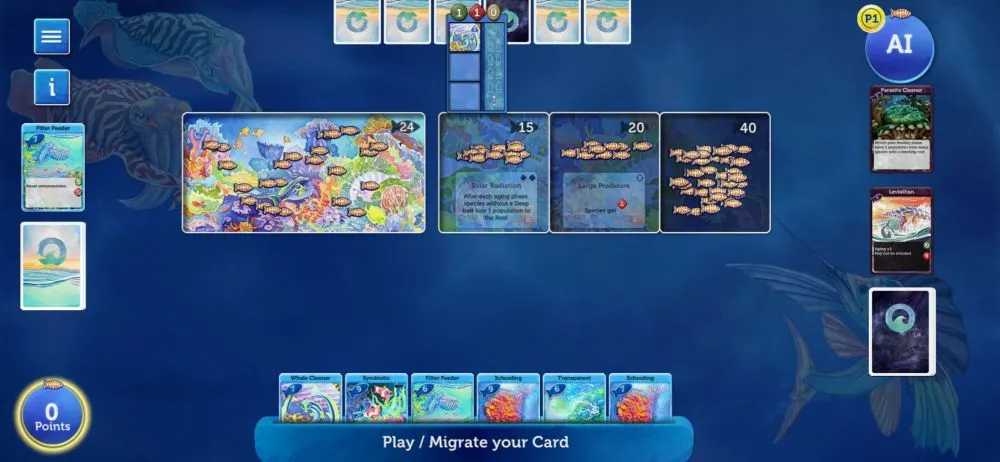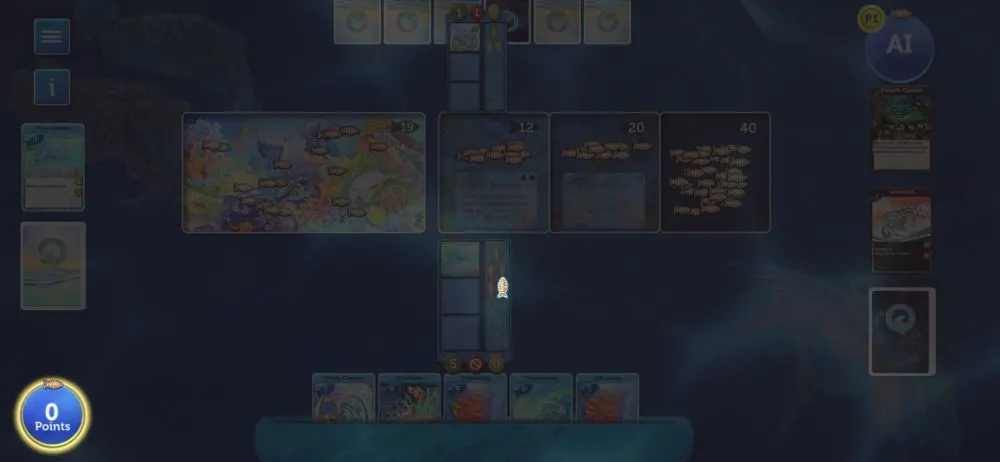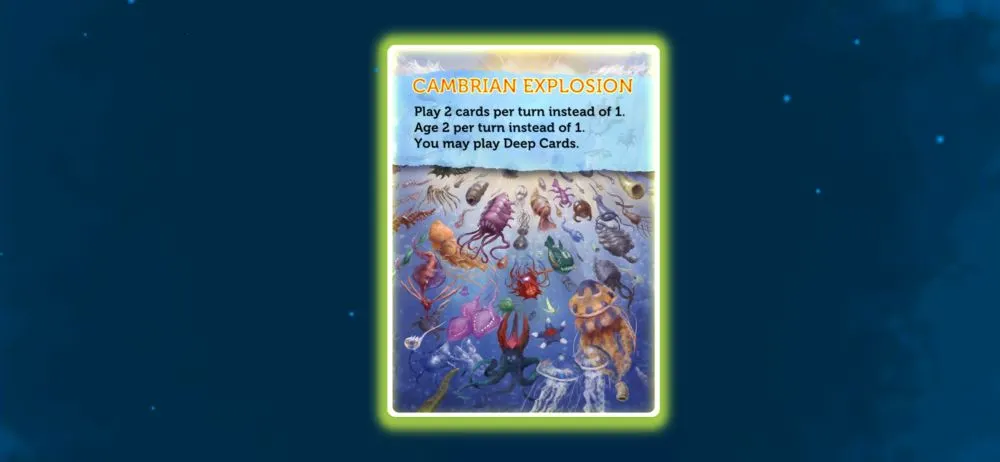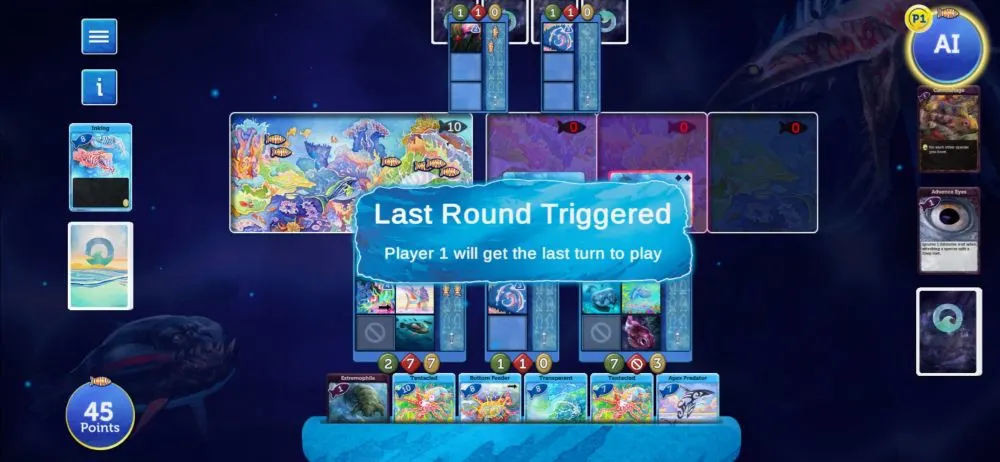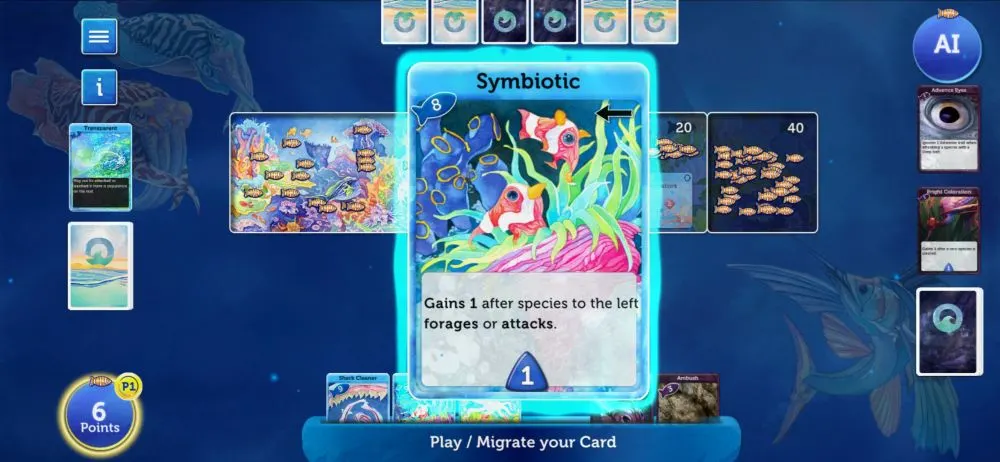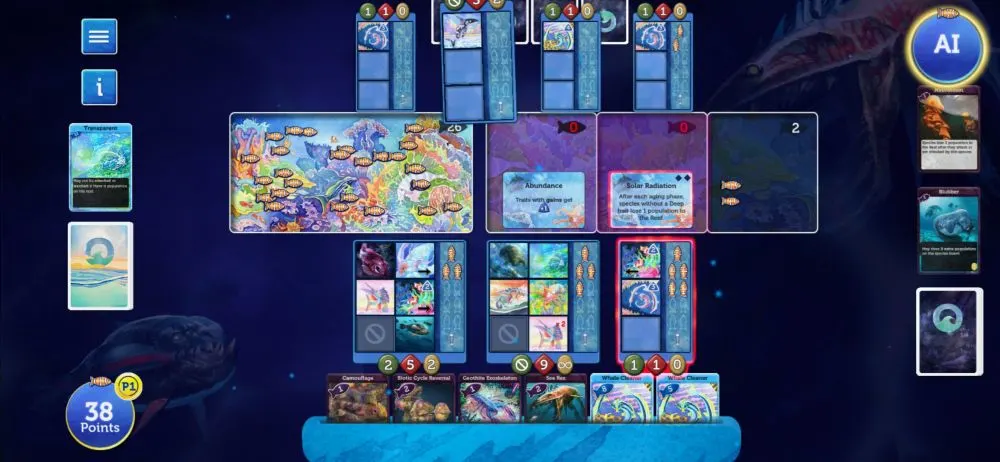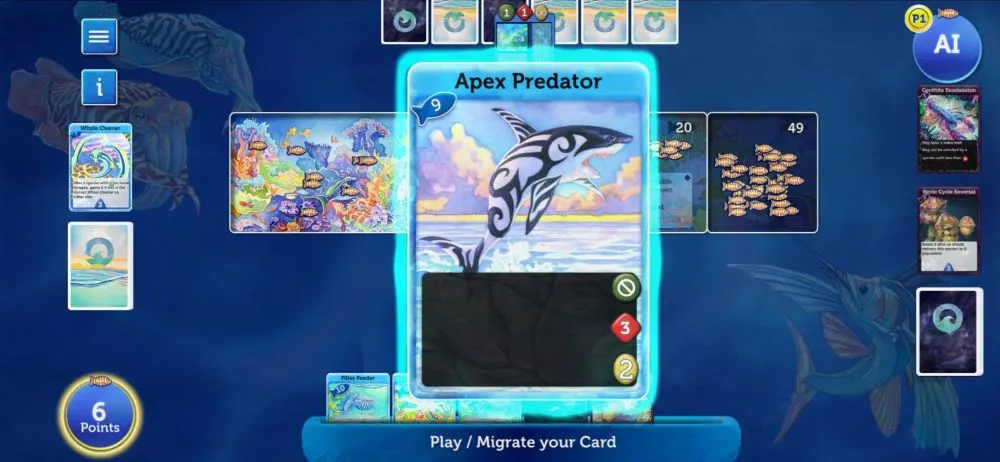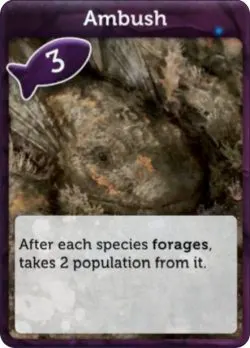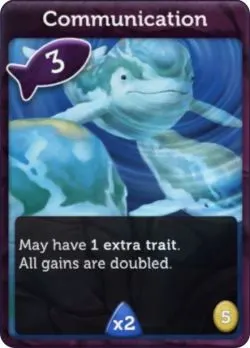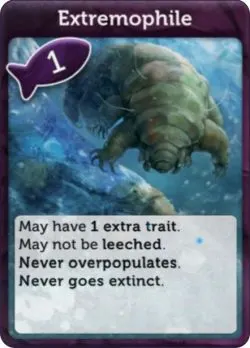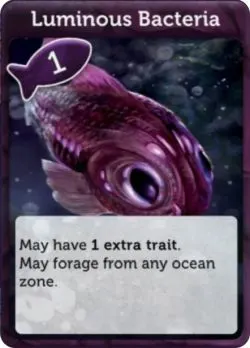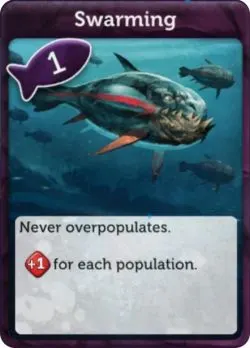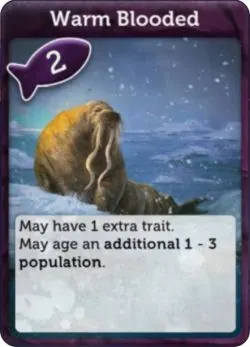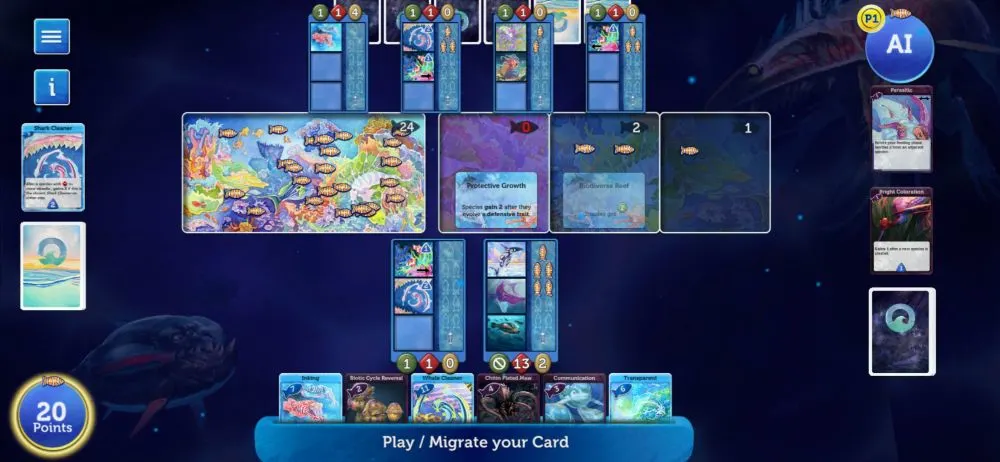The ocean — a massive body of water that embraces our world and teems with all sorts of life.
It’s here where you can find an entirely different universe on its own; from finding fish that are seemingly common to us humans, to creatures that are downright bizarre and misunderstood. In fact, there are still so many different things we do not know about marine life. New discoveries are made every so often and sometimes creatures that are seemingly extinct have been found once again. If you want to meet aliens, the ocean is the place to be.
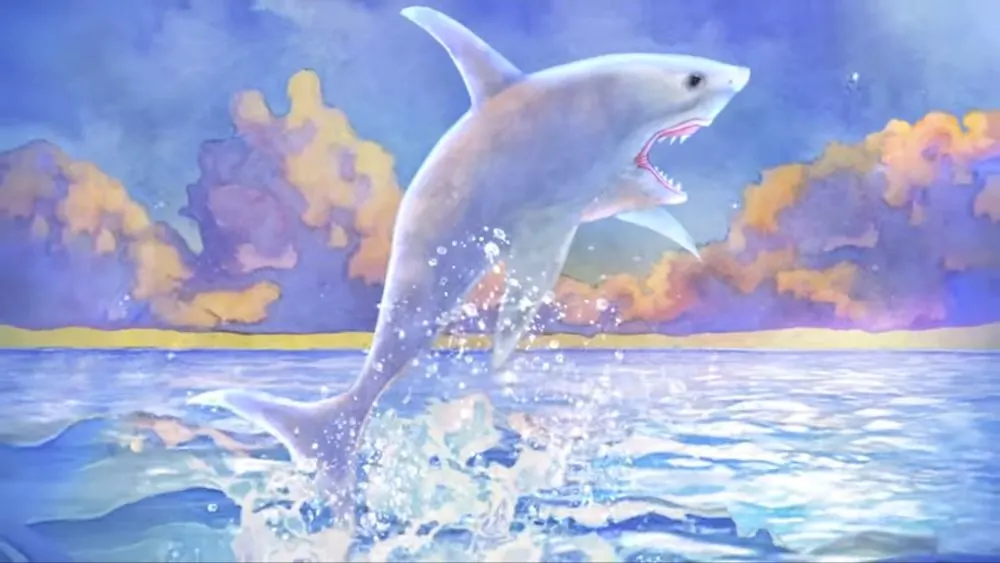
What makes sea creatures all the more interesting is that they all possess various traits that animals of land and air do not. Some sea creatures may have transparent flesh while others are exhibitors of bioluminescence. Some prefer to live in schools or groups, while others are of a more parasitic nature. While marine life is constantly evolving and adapting, a card game has been made to simulate life of species in the ocean and that game is aptly known as Oceans.
Initially a tabletop card game for four players, the game has been adapted into a digital version by North Star Games as a one-on-one duel. The goal of this game is to accrue the most amount of points by having the longest-surviving species in play. Doing this isn’t easy, however, since you have to consider how your species will get their food and stay alive.
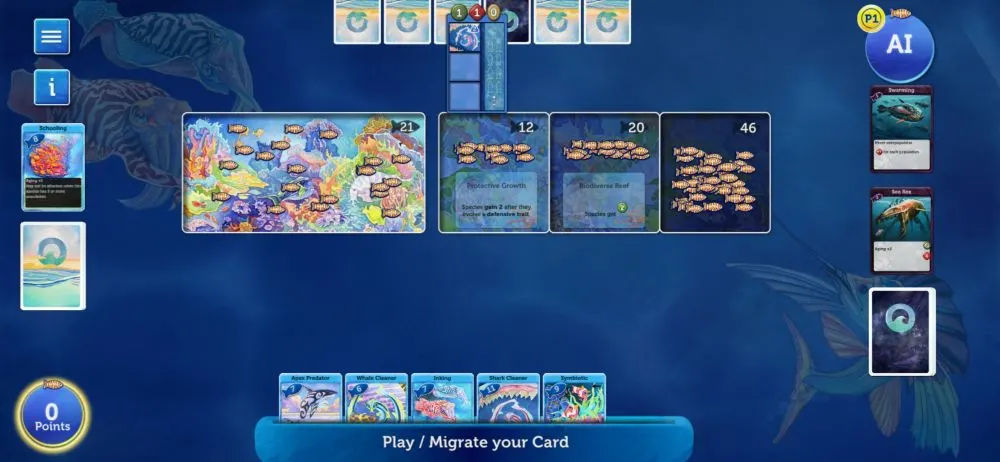
There will be lots of eating and foraging and other ways to get closer to victory, but it’s all a matter of how you should play your cards. Like all other board games, this one takes a while to learn and understand, but that’s why we’re here!
If you’re a little overwhelmed by how the game is played and want to get better, read our Oceans beginner’s guide below!
GAME TERMS
Before we talk about the game as a whole, we may first need to enlighten you on terms the game uses. You may refer to this list every now and then if you’re unfamiliar.
Aging – This refers to the amount of population tokens gained after a turn. Each species has a default Aging of 1.
Attack – May refer to two things:
- Action. This is the act of a species attacking another during the Feeding Phase.
- Stat. This is the amount of population gained by one species after attacking another. For example, if a species has an attack stat of 9, they will gain 9 population (depending on how much population their prey has) from attacking another species. The damage from an attacking species can be mitigated through defense.
Cambrian Explosion – The mark of the mid-game.
Deep Card – Dark-colored cards that can only be played or discarded when the Cambrian Explosion has been triggered. They may be obtained at any time after a player has finished their turn. When played, a player must sacrifice the number of points on the Deep Card using their earned points to the Reef. If they cannot afford this, the Deep Card cannot be played.
Defense – This is the amount of population loss mitigated during an attack. A species cannot be attacked if their defense stat is higher than the attack stat of the offending species. This is marked by a yellow oblong.
Discard Pile – This is where discarded Surface Cards and Deep Cards are placed.
Extinction – The state of a species running out of Population. If a species does not gain one Population point (two, post-Cambrian Explosion, or depending on how high their Aging is), the species is taken out of play with all their traits sent to the Discard Pile.
Forage – May refer to two things:
- Action. A means to gain population from the reef. This is done especially if there is nothing to attack. Every species, except for predators and some other traits, have a default Forage stat of 1.
- Stat. The green circle at the bottom of a species’ card. This denotes how much food they can obtain when played.
Gains – These are extra Population Tokens received after Attacking or Foraging. They are marked by a blue triangle.
Leech – To obtain Population via parasitism.
Migrate – The act of playing or discarding any card.
Ocean Zone – A trio of sections to the right of the Reef.
Overpopulation – A condition where your species’ Population board has been filled up beyond the fish bones icon. The species has to sacrifice 5 of its own Population to the Reef when this happens.
Population – Sometimes called Population Tokens or Population Points. These fish-shaped items serve as the indicator for how far ahead a player is from their competition. The player who Ages the most Population and has the most Population on their boards by the end of the game is the winner. These tokens can be gained through Foraging from the Reef or attacking another species.
Reef – The main food source for both players. This is the leftmost side of the board.
Scenario Card – Scenario Cards trigger when an ocean zone empties out. The effects written on Scenario Cards affect both players and the only way to null their effects if need be is to Migrate Population from one ocean zone into the empty one by discarding.
Surface Card – The main cards of the game. Six of these are given to each player during the Setup Phase of the game.
Trait – Surface and Deep Cards. These are what make your species. Some of these will allow extra traits to be played. A species may only have a maximum of 3 Traits unless specified otherwise.
With the terminologies properly defined, let’s now talk about the phases in Oceans.
PHASES OF THE GAME
In almost every tabletop game, there are phases which keep the tempo or flow of the session. Oceans is no different and as one plays the game continuously, they’ll soon be very familiar with what happens next.
Here’s a bird’s-eye view of Oceans’ phases:
1. Setup
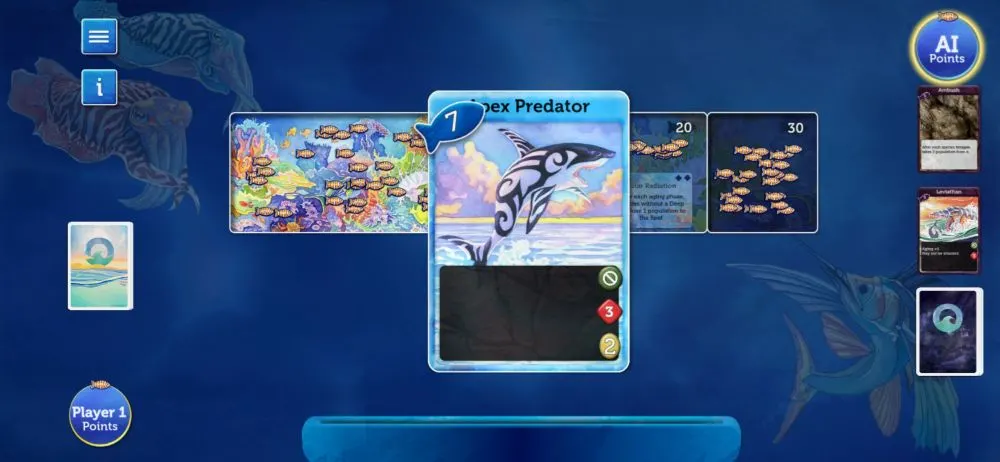
The board of Oceans is quite simple to look at: you have a Reef and three other ocean zones. The Reef is where each specie may forage and the other three ocean zones are where the food (represented by clownfish icons) Migrate from. If the first Ocean Zone empties out, the scenario card is triggered with the Cambrian Explosion and it usually marks the mid-game (more on that later). If the second Ocean Zone empties out, another scenario card triggers, activating effects that could be detrimental to both you and your opponent. If the third Ocean Zone empties out, that marks the final turn or the end of the game.
A random card is set on the Discard Pile on the left to signify how many fish from the last and first ocean zones are to Migrate to the Reef. Then both players are given 6 Surface (light-colored) cards in their hand. In the actual board game, the first player to start is the one who could hold their breath the longest, but in this case, it’s randomly chosen between you and the AI.
Then you proceed to the Migration Phase.
2. Migration Phase
This is the phase where the game truly begins. You either play a trait and create or evolve a species, or you can choose to Migrate food from one Ocean Zone to another. Since your goal is to amass the most aged population, playing a trait to make a species is ideal for your first move.
Set any down Surface Card without a red diamond on it (we will explain later) any you’re ready to proceed to the next phase.
3. Feeding Phase
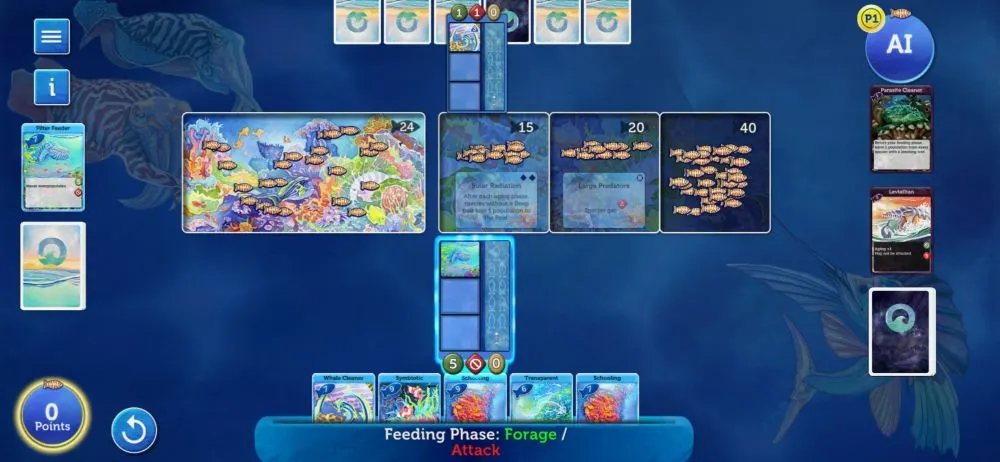
This is where you can gain your points. To forage, drag a species bearing a numbered green circle to the Reef. Depending on the number in the green circle, this will dictate how much food they will obtain (this is the creature’s Forage Stat). If a species has been given a cancel sign (🚫) on either its Attack or Forage stats, it cannot perform the canceled action no matter how many other numbers it has for either stat.
For instance, if you place an Apex Predator card (canceling Foraging but adding 4 Attack) on a species with 2 Foraging, it will no longer be able to Forage. It will now only be able to gain Population by attacking species that have it. Use this wisely as predators normally go extinct because they cannot forage from the Reef.
Once a player is done feeding, they proceed to the next phase.
4. Deep Card / Discard Phase
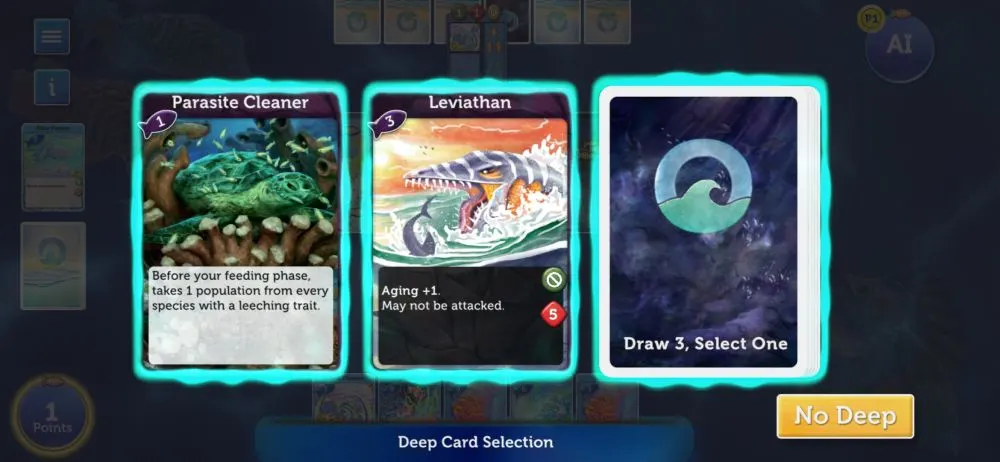
After every player’s turn, they are given the chance to pick up a Deep Card.
Deep Cards are powerful Traits that can only be played after the Cambrian Explosion has been triggered. The properties of some Deep Cards may grant your species overpopulation and/or extinction prevention, additional Aging, and many more tactically sound properties. We’ll talk more about Deep Cards soon.
After selecting a Deep Card (or not), you proceed to the Discard Phase. Discarding any of your cards during this phase will not affect Migration; it’s merely for you to remove cards that you most likely won’t play in the next turn. You may only carry up to 6 cards in your hand.
Item numbers 1 to 4 will play out until the first or third Ocean Zones empty out. The game can be played without the Cambrian Explosion but this phase is inevitable in most cases.
5. Cambrian Explosion and Scenario Card Trigger
This is where the game really picks up.
After the Cambrian Explosion has been triggered along with the Scenario Card placed in the first Ocean Zone, players now have to play or Migrate two cards, Population Aging has been bumped up to 2 per species, and Deep Cards may now be played or discarded. Your species in play become more powerful, but so do the opponent’s.
The Scenario Card, on the other hand, affects both you and your opponent. This only happens if either of the first two Ocean Zones get emptied out. For example, Solar Radiation makes your species lose 1 Population to the Reef if a turn passes without them bearing a Deep Trait. Both scenarios may be active at a time unless either Ocean Zone has been re-populated. Be sure to remember what the current scenarios are before you begin your turn.
The game carries on as usual but at a much quicker rate. Eventually, the third Ocean Zone will empty out, leading to the Final Turn.
6. Final Turn and Ending
Once the third Ocean Zone has been depopulated, a random player will have the final turn. It’s in this turn that will allow them to try to make the most out of things before the score tally. They may play regularly as the rules would allow them up until it’s time for them to Discard.
The score between the two opponents is measured by how much Population the players Aged and the sum of the Population of each of the players’ current species in play. The player with the most points wins.
These are the basic things you need to know about Oceans. Now, let’s move onto a few tips that could carry you throughout any game.
GENERAL GAMEPLAY TIPS
- Read Your Cards
This goes for any card game out there.
The worst thing that could happen to a player (mainly you), is a badly-played card. For instance, when you’re about to deploy a Symbiotic or Parasitic card, look at where the arrow is pointing. Naturally, these species will die out if the arrow points to nothing.
If you created a species to be preyed on by your own species, be sure that it does not have a Trait that prevents it from being attacked at all. In doing so, you may doom a species very early and keep yourself from earning any points. One creative way you could doom a species (don’t do this please, we’re only citing an example) is if you give them a Foraging Trait and an Attack Trait at the same time.
Both Foraging and Attack will cancel out, leaving the creature to starve itself into Extinction. If that isn’t a grim way to go, we don’t know what is. If said species has Symbiotic, Parasitic, Whale Cleaner, or Shark Cleaner, then it may have a slim chance of survival.
Let’s talk a bit more about Symbiotes and Parasites…
- Use Symbiotes, Parasites, and Cleaners Situationally
Cleaner fish, clownfish, lampreys, remoras, this is who they are!
These traits belonging to the examples above should always be used situationally. Usually use these cards if you have a strong species that can’t seem to contain its own Population. To keep its Population in check or if it Forages in great numbers (like the Filter Feeder), use a Parasite. If the species has a Speed trait and feeds in smaller numbers, try putting a Symbiote by its side. Whale Cleaners are affected by species with high Foraging numbers and Shark Cleaners are affected by species with high Attack numbers.
In using these, you’ll be able to Age more Population as the game goes by. Just be sure to keep them all connected since one slip up from you could starve the species. If you make one species become Symbiotic to a species next to it that doesn’t Forage or Attack, this species will definitely find itself Extinct in the next turn. Plan your cards before you put them down.
If the enemy also has a species with a high Foraging stat, it’s time to deal some damage.
- Deploy Predators Wisely
Re-enact Jaws except you’re on the winning end of it.
After deploying a predator (a species with the traits Apex Predator, Sea Rex, Leviathan, etc.), you will be sure that this species will not be able to Forage at all. Instead, it exists to solely feed on other species. You can use this on your opponent, or even your own species if the Parasites are falling behind. Just be sure not to drive your own species out to Extinction using this (unless this is part of your plan).
If the predator does not have anything to feed on, it’s bound to go Extinct in the next few turns. This is why “wisely” is the keyword of this item. Predators are powerful, but starve them and they’ll be gone.
There are cases where you can prevent predators and other species from going Extinct, and that’s through the use of Deep Cards.
- Pick Deep Cards Only When You Are Sure (with Examples)
As much as possible, try not to pick up Deep Cards before the Cambrian Explosion. You will not be able to discard these until then.
Once you are able to play these, only pick Deep Cards that are suited to your plans. Wantonly picking up Deep Cards and deploying them as species will only cause you to lose points since using Deep Cards will require the player to pay their debt to a body of water. To help you out in picking some really powerful Deep Cards, here are a few examples and what you can use them for:
- Ambush – Use this card for when the enemy has a big Forager or a species with a Filter Feeder. You’ll be able to take at least two Population Tokens from it.
- Communication – This card is for if your species has Symbiotic or Parasitic. Cleaner traits will also be affected. Just be careful not to Overpopulate this one.
- Extremophile – Using this card may cement your species on the board. It will not be able to go Extinct and it won’t Overpopulate. This card is ideal for predators.
- Luminous Bacteria – Want to cut off your opponent’s supply of Population? Migrate all the food to the other Ocean Zones and have your species feast on these instead.
- Swarming – This card is not necessarily used for predators. When used by species with Cleaner, Parasitic, or Symbiotic traits, they will gain attack power the more Population they have on their board. Combine this with Blubber and you’ll have one powerful Attack species.
- Warm Blooded – This one is useful for when your species has a Filter Feeder or multiple variants thereof. You will essentially create a whale. Either way, Warm Blooded is useful for big eaters on your board.
With that said, you have an entire gallery of mix-and-match critters… or do you?
- Try to Create More than One Species
While there is a strength in maintaining at least two species on your board, spreading out your species may greatly help in securing victory.
More species on your board means more points to be had since at the end of each turn, each species will age at least one member of their Population before the Cambrian Explosion and two members after that. For example, during the Cambrian Explosion, if you happen to have five species on your board that seemingly work together (with some going
Extinct at the end of your turn), you could have amassed at least 6 points or more with 10 being the most if you don’t have extra aging from cards like Schooling, Warm Blooded, or Sea Rex. Don’t worry about your species dying out; what matters is you taking points from using them up.
And that’s all for Oceans. Create, evolve, sacrifice, improvise, adapt, overcome. This game is a give and take among multiple species and it’s up to you to thrive in the dark, mysterious waters of the world.
If you have any other tips you’d like to lend would-be conquerors of the sea, leave them in the comment section below!

